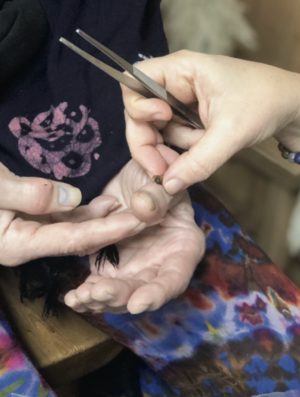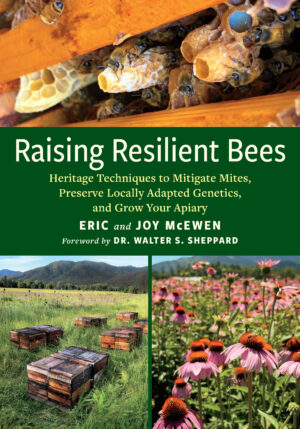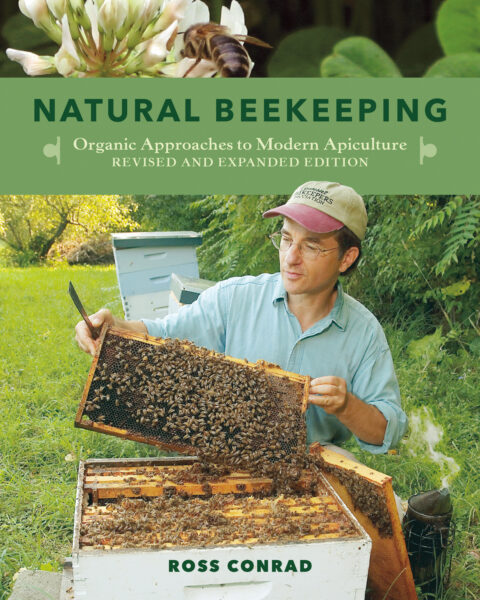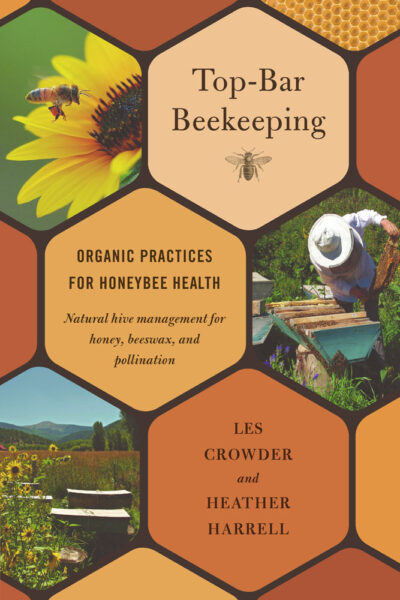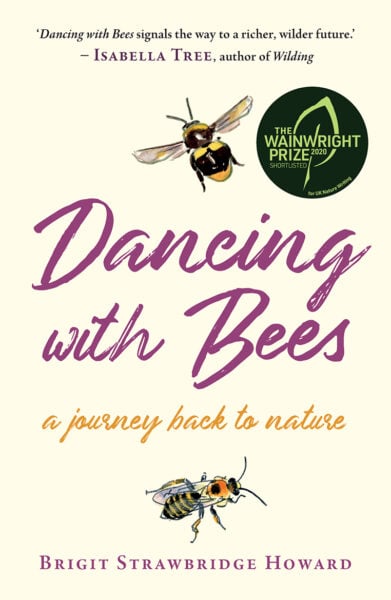All In The Sting: Health Benefits of Honey Bee Venom
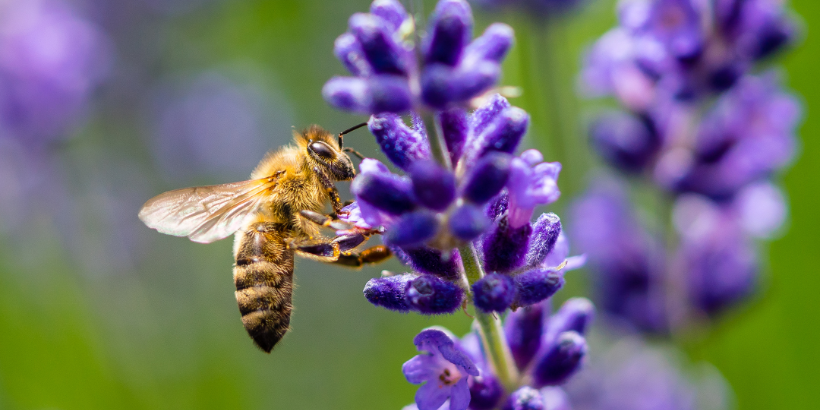
Tired of trying different traditional medicines to relieve inflammation and joint pain? Give bee venom therapy a try.
Apitherapy and bee venom therapy is an emerging medicinal treatment that uses the stinger of a honey bee to alleviate pain and aid in healing. Bee venom therapy works by catalyzing the body’s natural healing processes. Most people turn to apitherapy after exhausting themselves with traditional medicines that haven’t worked.
The following is an excerpt from Raising Resilient Bees by Eric and Joy McEwen. It has been adapted for the web.
Unless otherwise noted, all photographs copyright © 2023 by Eric and Joy McEwen.
Effects of Honey Bee Venom
Honey bee venom is best known for its use in combating arthritis and alleviating joint pain and inflammation. As of late it has been getting more attention for its potential in treating conditions such as Lyme disease, breast cancer, and multiple sclerosis. Interestingly, it has been hypothesized that the honey bee’s stinger was the original acupuncture instrument. However the stinger’s mechanism of administration is much more complex than a needle.
The Three Parts of A Stinger
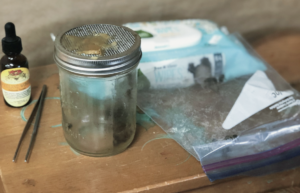
The basic apitherapy tool kit: honey bees, tweezers, and alcohol to sterilize the site. This natural medicine is accessible to all.
The stinger is composed of three parts: a detachable muscle, a shaft with tetrahedron-shaped barbs that twists clockwise in response to muscle convulsions, and a venom sac that is compressed by muscle contractions. When a honey bee stings a mammal and the stinger is detached from her body, the muscle continues to pump the toxin while the barbs are forced deeper into skin, making for an ideal injection. The main pharmacological component of bee venom is melittin, constituting approximately 50 percent of its dry matter. Many studies have reported that melittin is a very active peptide, exhibiting antiviral, antibacterial, antifungal, antitumoral, and antiparasitic activities.13
Does Honey Bee Venom Therapy Harm Bees?
Some people object to the killing of bees in the practice of stinging for medicine. Our view of the bee colony is as a superorganism: a colony with 50,000 individuals, with each bee acting as a single cell in the whole. Individual bees live for approximately 40 days, meaning that roughly 1,200 of a hive’s bees die of natural causes each day. That is about 2.5 percent annual daily losses.
The mission or message of a single bee can be to deliver a wonderful medicine to a person, with no damage to the colony. When compared with the mechanical electro-venom harvesters that are mounted upon colony entrances, we feel we are practicing a less disturbing, less intrusive method by hand-harvesting individual bees rather than upsetting entire colonies, which are clearly agitated by these devices. In addition, the administration of live venom is superior to dried, stored venom injected by artificial means.
The Body’s Response to Honey Bee Venom
Bee venom therapy works by catalyzing the body’s natural healing processes. The body responds to the sting with swelling and vasodilation, which brings large amounts of blood to the area. This immune response includes white blood cells known as macrophages, which scour and consume materials seen as foreign to the body. Furthermore the body’s adrenal glands are stimulated by the venom to produce cortisol, the body’s endogenous version of the steroid cortisone, which is used to treat arthritis and other inflammatory conditions.
Honey Bee Apitherapy and Healing Arts: A New Type of Therapy
Charles Mraz, beekeeper and author of Health and the Honeybee, is considered the herald of apitherapy and bee venom therapy. He started the American Apitherapy Society, whose conferences Joy regularly attends. The American Apitherapy Society’s website is a wealth of information from scientific journals and medical journals from around the world. Through attending their conferences and workshops, Joy gained the confidence to open a practice of her own. In 2013 she started giving consultations and administering apitherapy, specifically bee venom therapy. Our family practice is called Honey Bee Apitherapy and Healing Arts, and our focus is on holistic health of the mind, body, and spirit using bee products as medicine and teaching people about keeping their own bees.
How Honey Bee Venom Therapy Works
Our practice follows a patient-led process wherein Joy and her client go over a general intake history and perform a test sting during the first appointment. As time goes on, and if the patient so desires, they increase the duration and number of stings. We have a “spirit bowl” (a little bowl with honey placed within) at Diggin’ Livin’ where the honey bees come to become medicine bees.
From there, we put them in a quart-sized glass jar with a sprouting screen for a lid, giving them a little honey and a dash of water on top of the screen. We use these bees to administer pure venom to alleviate pain and aid in the healing of people’s conditions. Eventually, we encourage apitherapy clients to learn to sting themselves. We teach our clients by first having them practice stinging us until they gain confidence and prowess.
The Purpose of Honey Bee Venom Therapy
We are passionate about teaching people about the availability and accessibility of the various medicines of the beehive, specifically bee venom. Many folks experience apitherapy for the first time after exhausting themselves with traditional medicines that haven’t worked and have depleted their wallet. As we strive to be more self-reliant as a family, we seek to share what we learn with our greater community. We hope that all apitherapy students and clients will someday learn the craft and art of beekeeping so that they can have their medicine available at their back door. In keeping bees, caring for them, and consuming their products, we feel a direct correlation to maintaining our good health and that of the planet.
Notes
13. “Bee Venom,” ScienceDirect, https://www.sciencedirect.com/topics/chemistry/bee-venom.
Recommended Reads
A Home Worth Buzzing About: How to Create the Perfect Bee Hive
Recent Articles
Garlic mustard: while known as “invasive,” this plant can be consumed in its entirety and has great nutritional value. Plus, the garlic-flavor is a perfect addition to any recipe that calls for mustard! The following are excerpts from Beyond the War on Invasive Species by Tao Orion and The Wild Wisdom of Weeds by Katrina…
Read MoreEveryone loves a refreshing, fermented, nutritious drink…even your garden! Take your fermentation skills out of the kitchen and into the garden by brewing fermented plant juice. The following is an excerpt from The Regenerative Grower’s Guide to Garden Amendments by Nigel Palmer. It has been adapted for the web. How to Make Fermented Plant Juice Fermented…
Read MoreWant to see your crops thrive this upcoming growing season? The key is in soil fertility and health. Spend time maintaining your soil’s health to guarantee bigger and better crops come harvest time! The following is an excerpt from No-Till Intensive Vegetable Culture by Bryan O’Hara. It has been adapted for the web. What Is Soil Fertility?…
Read MoreMany know the effects of catnip on our feline friends, but few realize that catnip has medicinal effects for humans. From stomach aches to reducing fevers, catnip is a versatile herb with many benefits. The next time you grow this plant for your cat you may end up taking a few cuttings for yourself! The…
Read MoreIt’s time to take control of your seeds and become a plant breeder! Saving your seed allows you to grow and best traditional & regional varieties, and develop more of your own. The following excerpt is from Breed Your Own Vegetable Varieties by Carol Deppe. It has been adapted for the web. Becoming A Plant…
Read More

